5 Persistent Peach Tree Pests
5 Persistent Peach Tree Pests
At this point in the summer, we are right in the middle of peak peach season. In Illinois, July and August are the months when peaches are always “in season” and are ripe for the taking (or picking). These trees can be a little difficult to grow if you do not have experience, but they are relatively easy to maintain once you get the hang of it. That being said, all the water and sunlight in the world will not be enough to salvage the fresh fruit if hungry pests find it first. Any garden pest could technically become a pest of peach trees if they happen to land on the trees and ruin the fruit. But there are five pests that are notorious for specifically seeking out peach trees as both their home and their food source. Let’s explore why these pests are such notorious enemies of peach trees and how they can bring a swift end to peach season.
Peachtree Borers
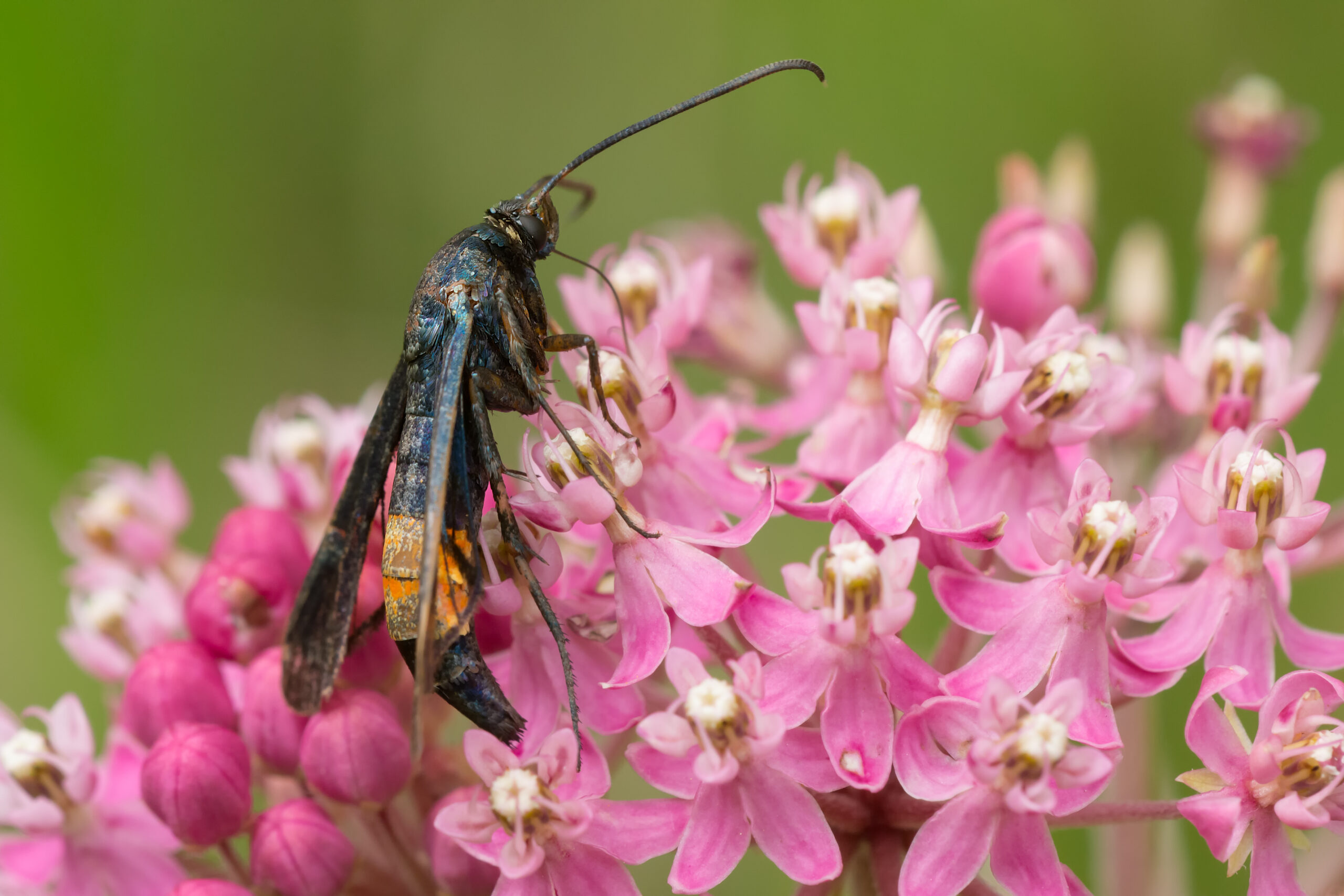
Given the name of this pest, it seems fairly clear why it is such a nuisance to peach trees in particular. Peachtree borers are clearwing moths that almost resemble wasps due to the yellow stripes on their abdomens. The adults tunnel into trees and are definitely not a pest you want in your yard, but it’s the larvae that cause the most damage. They are over an inch long and white-colored, so they stand out against the earthy tones of the trees. The larvae will feed from the roots all the way up the trunk, staying within the confines of the bark for protection. Peachtree borers use existing cracks in the bark to invade and target any wounds in the tree in order to feed upon the wood much more easily.
Adult peachtree borers lay their red eggs at the base of a peach tree. During the warmer months, these eggs hatch about a week later and unleash the larvae upon the unsuspecting tree. If the eggs are laid too close to the beginning of the frosty months, the hatched larvae will overwinter around the tree or under the bark, then begin feeding again when the sun begins to thaw everything in spring. The peak emergence time for adult peachtree borers is usually in August, but they are major problem pests all summer long. If the peach tree begins to release a gum substance and it looks like there is some frass (small insect droppings) within, it is likely a sign of a peachtree borer issue. They can even kill younger peach trees if they are not removed in time, so it is important to stay vigilant and look out for any signs of peachtree borers, as you would with any pest.
Scale Insects
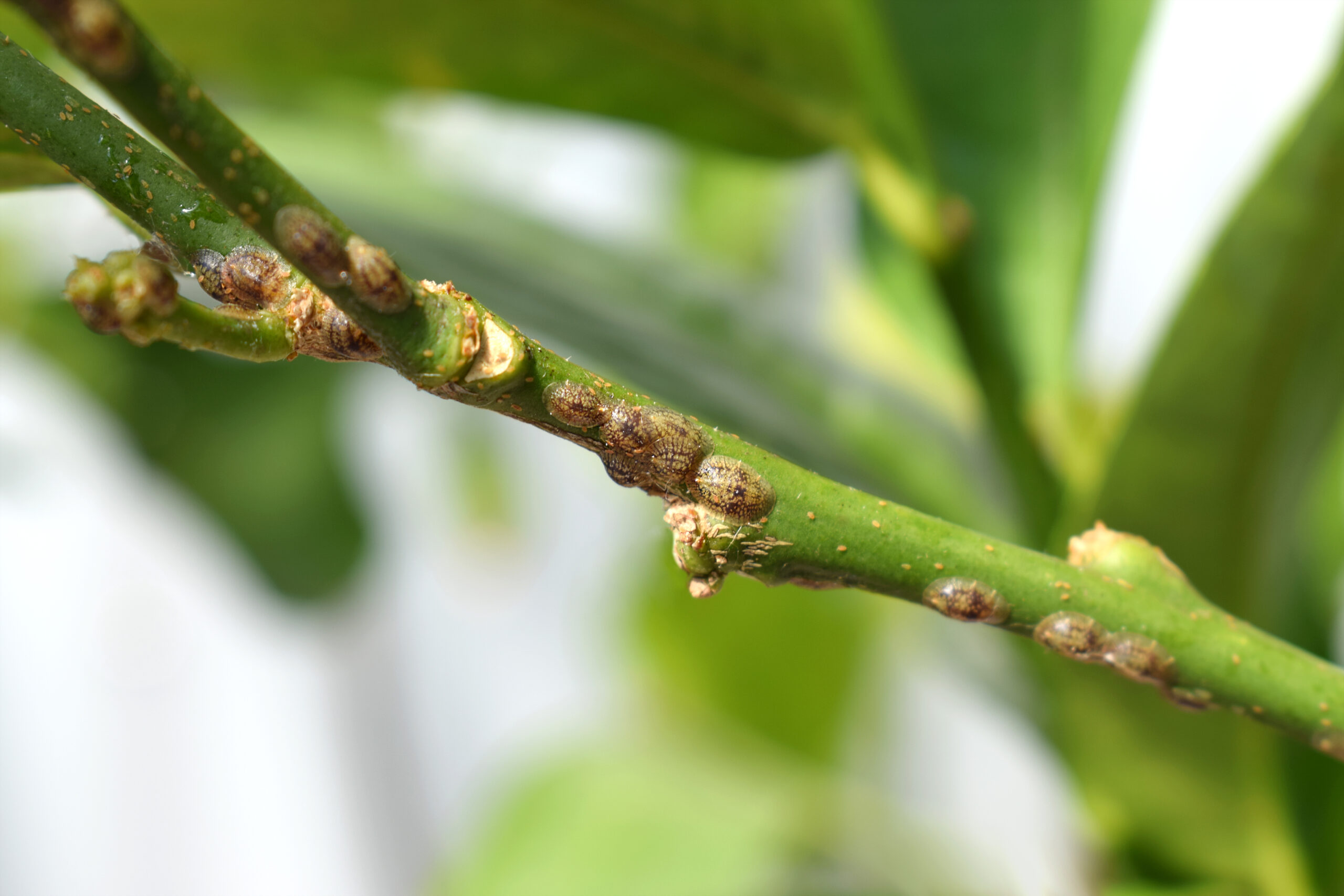
This pest is not unique to peach trees, as scale insects are problem pests for just about any plant and tree you can imagine. They are such a risky pest to have anywhere in the yard for two main reasons. One, they just look like some random bumps on the trunk and branches, so they are easy to ignore. And two, they can gradually kill trees because they infest every part of the plant. Adult scales are immobile, as the females create a waxy substance to protect herself and her offspring from insecticides. Peach trees experience two types of scales: the white peach scale and the San Jose scale. They look similar and usually grow up to 1/8 of an inch long, so both scales are sneaky pests that can ruin your peach trees before the fruit even ripens.
Scales can be found on any part of a peach tree, including the bark, fruit, and leaves. There can be anywhere from 3 to 6 generations per year, depending on the weather patterns. Scale nymphs will disperse among the tree and feed upon the sap that they get by piercing the leaves and stems with their mouthparts. Since the sap is available much earlier than the leaves and fruit, scales can start feeding in early spring and their young can develop along with the blooms. The nymphs will disperse among the tree after hatching from their eggs, and they begin feeding as soon as possible. If there are too many scales on the tree for them to comfortably stay in their original spots, they will begin going onto the actual peaches to feed. This is the worst case scenario since they will not only damage the tree and its fruit production, but also cause the fruit to become inedible once they feed on it.
Oriental Fruit Moths
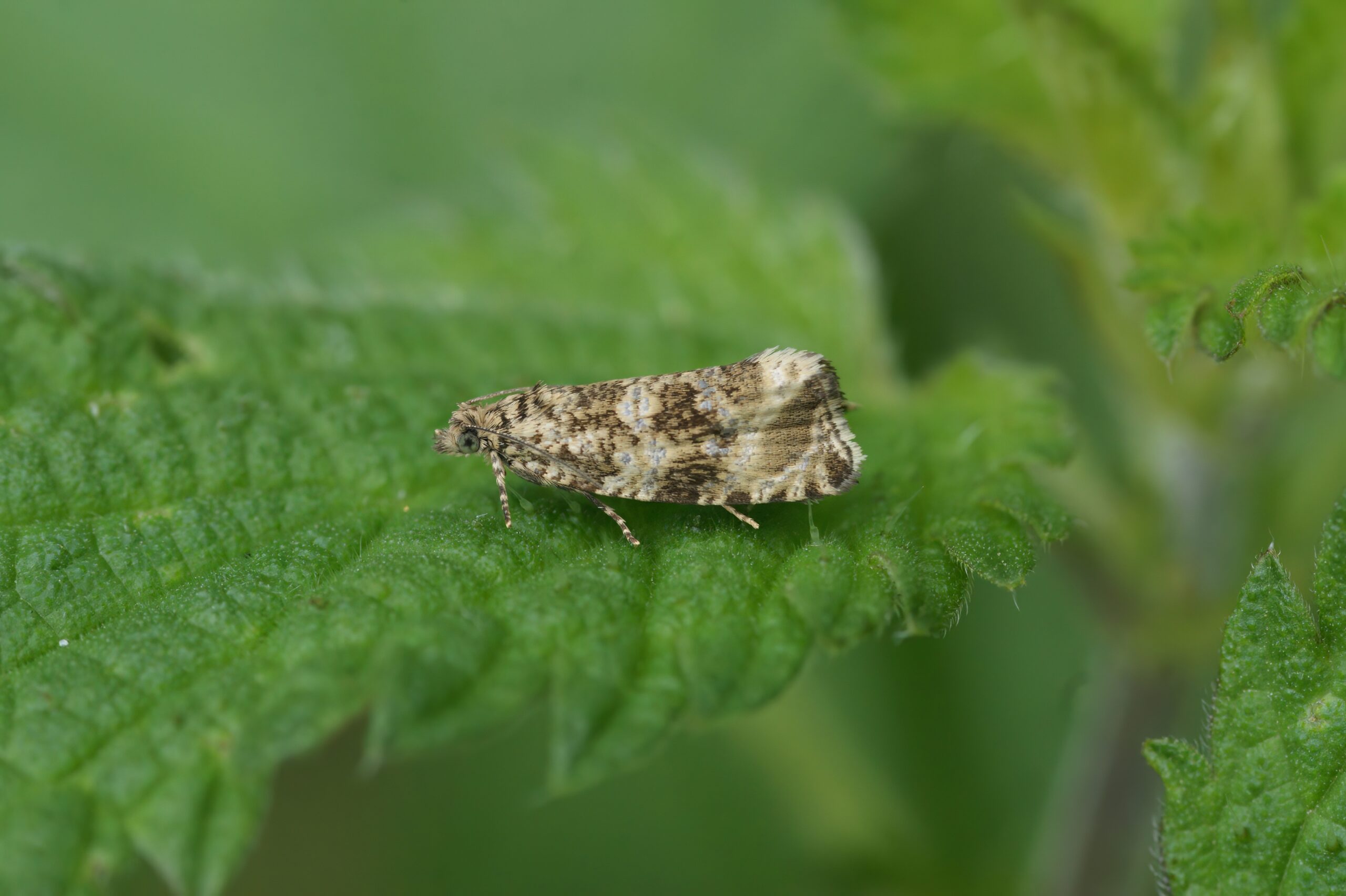
These gray-brown moths have a wingspan of 1/2 an inch, and the fact that they are nocturnal makes them even more of a formidable pest. It’s much more difficult to determine the pests ruining your peach trees and catch them in the act when they do all of their feeding at night. Similar to the peachtree borers, the caterpillars of oriental fruit moths are far more destructive than their adult versions. The caterpillars are white with black heads, and are about 1/2 of an inch long. They are notorious for feeding upon other stone fruits, like plums and pears, and for being one of the most frustrating pests to have in an orchard. Since the caterpillars build their cocoons and overwinter in the protective coating, they have a head start on ruining the following spring’s peach blossoms and subsequent fruit production.
The caterpillars begin the trouble by boring into the ends of branches and chewing their way up into the heart of the tree. They can hide within the wood and stunt the growth of the tree by preventing it from getting the proper water and nutrients it requires. There can be up to 6 generations of oriental fruit moths per year, so they will attack the trees in all stages of their annual growth. The later generations will bore into the ripe peaches and render them worthless. The adult moths typically emerge as the trees bloom, meaning there is not much time in between the winter frost and the spring blossoms to prevent oriental fruit moths, unless you are in the know and completely prepared. The good news is that oriental fruit moths are only devastating in large numbers, so a few caterpillars are not the end of the world. The bad news is that since the caterpillars are mostly hidden from burrowing into the tree, their numbers can grow exponentially throughout the year.
Tarnished Plant Bugs
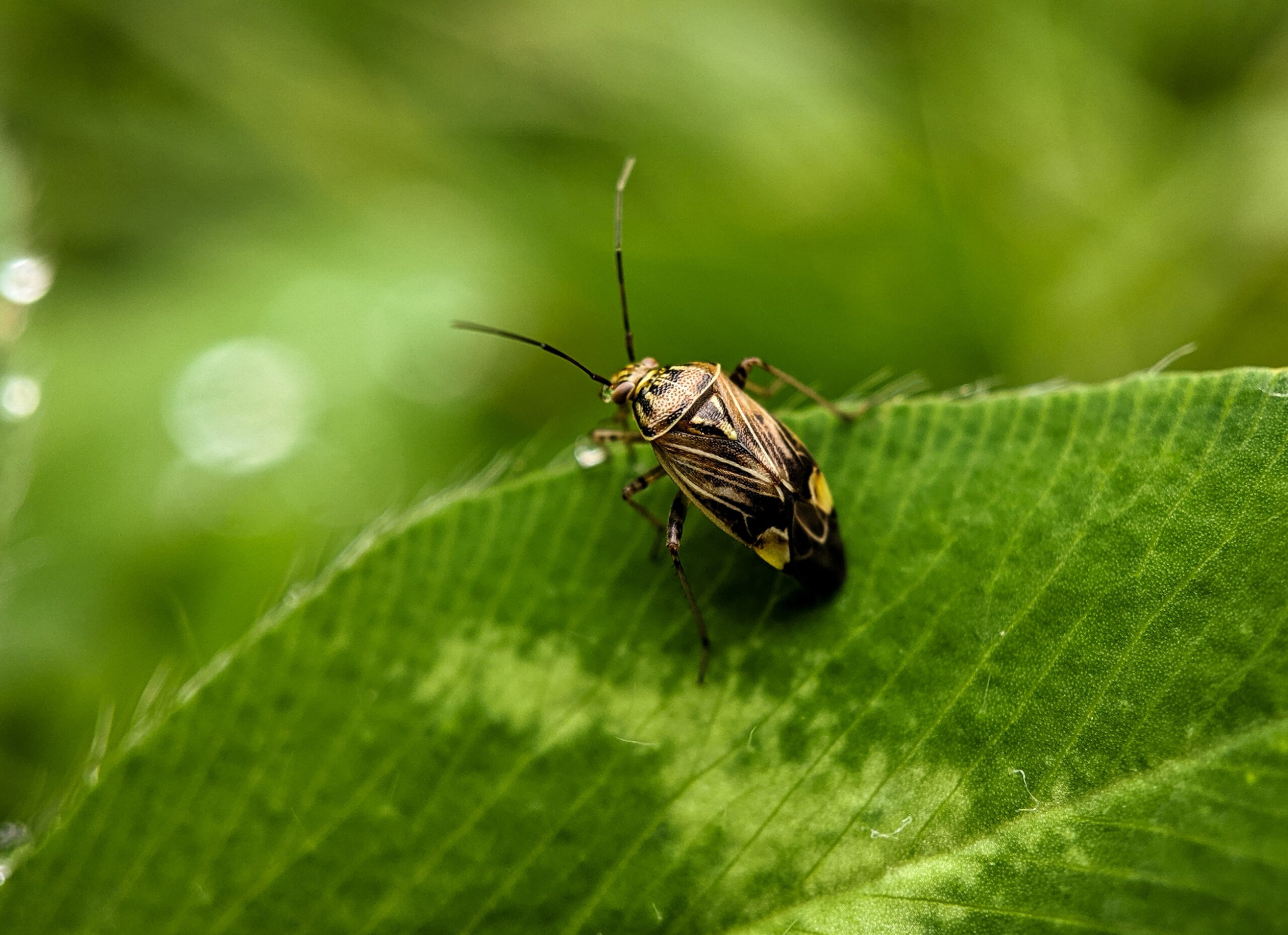
With a general name like “tarnished plant bug,” it can be difficult to know what to expect from this pest. They are flat insects with wings and mottled brown coloring. Tarnished plant bugs are just 1/4 of an inch long, but they are still infamous pests of peach and plum trees. These insects are attracted to trees with plenty of weeds around the base, as they will first go to the weeds and then work their way up to the rest of the tree. They are active throughout the bloom season because their primary targets are the blossoms and peaches. They pierce both of these with their sharp mouthparts, causing the growth to become deformed and ruined.
The main issue with tarnished fruit bugs is that they function much like stink bugs. When stink bugs feed on fruit (including peaches), they ruin each one that they touch by releasing toxins around the feed site that are not lethal but still make the fruit taste bad. Tarnished fruit bugs do the same damage, so they can ruin just about all of your peaches if they are left untreated. It can be easy to confuse tarnished plant bugs for brown marmorated stink bugs upon first glance, especially since they share the same style of fruit destruction. The easiest way to distinguish between them is to look at their backs; tarnished plant bugs have a small white triangle just below their head. The main result of their damage is causing the peaches to ooze a gummy substance, showing that the tree is stressed and the fruit will be inedible before long.
Plum Curculios
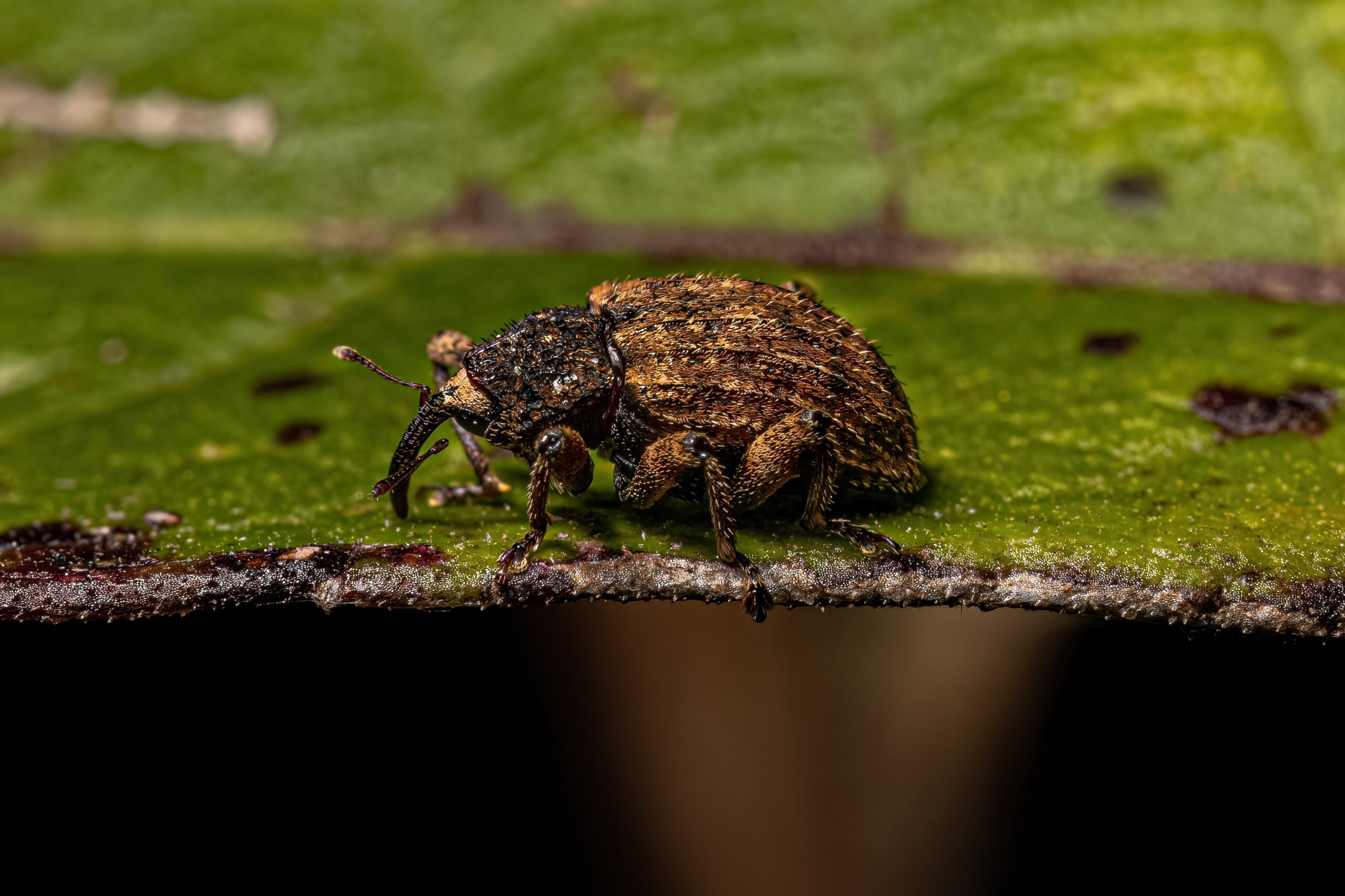
Plum curculios do love plums (clearly), but they are also destructive pests of peach trees. These beetles are about 1/4 of an inch long with a mottled brown pattern. Their long snouts allow them to cut into the peaches and drink the nutrients without having to burrow inside the fruits. They start being active when the temperature stays above 50 degrees on a consistent basis. This is when peach trees start growing again after winter, so plum curculios are unfortunately one of the earliest peach tree pests every year. The adults even overwinter in nearby leaf litter, spending the cold months dormant and in wait for the trees to finally start producing the delectable peaches once again.
The adults and grubs both deal substantial damage to peach trees, as opposed to the other destruction done by specific life stages in other pests. The adult females cut a crescent-shaped gash in the peaches — usually younger peaches — before placing her eggs into that opening. The grubs will then begin to devour the fruit right after hatching, begin the cycle of destruction all over again. Adult plum curculios damage peaches by puncturing the fruit all over and feeding, thus rendering it inedible. Larger peaches will be able to technically survive a plum curculio infestation, but younger peaches don’t stand a chance. Even if the peaches do survive, it’s not much of a celebration considering they are filled with puncture holes from a bunch of insects!
Protect Your Peaches With Pointe!
It’s wonderful to have a yard full of blossoming plants and full trees, especially when those trees produce fruit that you and your family can enjoy for months to come. Unfortunately, the good feeling around this experience is immediately diminished when pests invade your produce and render them all worthless. The caring experts at Pointe Pest Control understand the frustrations that come with any kind of pest problem, and we are dedicated to keeping your home pest-free all year long. Our treatments are all completely safe for people and pets, so you can enjoy a space free of pests without toxic pesticides contaminating everything. Our experienced technicians will explain every treatment they applied during the service, as well as answer any questions you have throughout the process. For a free quote on the most effective pest control services around, contact us today!
Citations
Gorsuch, C.S. (Dr.) & Scott, J.M. (2021, June 7). Peach insect pests. Clemson Cooperative Extension: Home and Garden Information Center. Available at https://hgic.clemson.edu/factsheet/peach-insect-pests/ (Accessed on July 19, 2023).
How to treat and eliminate peach tree pests. (n.d.). Minnetonka Orchards. Retrieved July 19, 2023, from https://minnetonkaorchards.com/peach-tree-pests/
Layton, B. (Dr.) (2020, November). Disease and insect control for homegrown peaches and plums. Mississippi State University Extension. Available at http://extension.msstate.edu/publications/disease-and-insect-control-for-homegrown-peaches-and-plums (Accessed on July 19, 2023).
Peach, cherry, plum, and nectarine insect pests. (n.d.). University of Maryland Extension. Retrieved July 19, 2023, from https://extension.umd.edu/resource/peach-cherry-plum-and-nectarine-insect-pests
Ullman, M. (2023, March 17). Peach tree diseases and pests. Better Homes & Gardens. Available at https://www.bhg.com/gardening/pests/insects-diseases-weeds/peach-tree-diseases-and-pests/ (Accessed on July 19, 2023).
Request a Free Quote Today
(We do not share your data with anybody, and only use it for its intended purpose)


